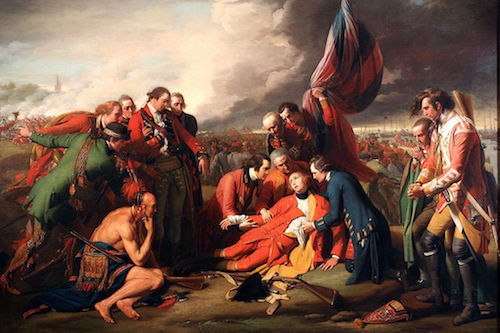 Intelligent Design
Intelligent Design
 Medicine
Medicine
Death: The Final Frontier

Editor’s note: Physicians have a special place among the thinkers who have elaborated the argument for intelligent design. Perhaps that’s because, more than evolutionary biologists, they are familiar with the challenges of maintaining a functioning complex system, the human body. With that in mind, Evolution News & Views is delighted to present this series, “The Designed Body.” For the complete series, see here. Dr. Glicksman practices palliative medicine for a hospice organization.
 Death is something that most of us would rather not even think about, never mind talk about. Yet how can we begin to explain the existence of human life without understanding how easily it can become non-existent? You have to first understand how, left to their own devices, the laws of nature lead to death, not life. Unless life can develop innovations to overcome the forces of nature, it is as good as dead. Just as a mechanic knows that there are many different ways a car can die, so too, every physician knows that there are many different pathways to death.
Death is something that most of us would rather not even think about, never mind talk about. Yet how can we begin to explain the existence of human life without understanding how easily it can become non-existent? You have to first understand how, left to their own devices, the laws of nature lead to death, not life. Unless life can develop innovations to overcome the forces of nature, it is as good as dead. Just as a mechanic knows that there are many different ways a car can die, so too, every physician knows that there are many different pathways to death.
For example, if a car doesn’t have gas, or not enough oil or anti-freeze, it dies. This happens because, without gas, the car doesn’t have the energy it needs to overcome the force of inertia that keeps it at rest. And when it doesn’t have enough oil or anti-freeze it can’t overcome the force of friction or heat that causes its moving parts to seize. So too, medical science knows that we need to have enough oxygen, water, salt, and sugar to survive. Oxygen and glucose are needed to give our cells the energy they need to produce, move, and control chemicals, and to overcome forces like diffusion and osmosis to maintain their chemical content and volume. We also need oxygen and glucose to give us the energy to overcome forces such as inertia and gravity to move about in the world. Water and salt are needed so our cells can maintain their proper chemical content and volume. We also need water and salt to maintain blood volume so our cardiovascular system can overcome forces such as inertia and gravity to have enough blood flow to feed all of our organs and tissues.
A car manufacturer provides gauges on the dashboard to warn the driver of potential problems with its content of gas, oil, and anti-freeze. So too, we have gauges in our brain that tell us when to breathe in air (to get more oxygen), drink fluids (to get more water), and eat food (to get more salt and sugar). Moreover, just like the gauges on the car dashboard, our brain warns us of potential disaster as we feel an increasing urge to breathe or experience thirst and hunger. Given what evolutionary biologists say about how life came into being, one could ask which of the drives that make us breathe, drink, and eat came about first and how our earliest ancestors could have survived without all of them coming into being together? Of course, this doesn’t even begin to explain how they actually work to keep us alive.
Even though we know when and how to replenish our body with what it needs to live, eventually we die anyway. So what is the final common pathway to death and how does our body try to prevent it from happening? Up until about fifty years ago, the final common pathway to death, no matter the cause (for example, heart attack, pneumonia, cancer, stroke, trauma), was cardiopulmonary arrest. This is when the heart stops, followed almost immediately by breathing, or the breathing stops, followed soon after by the heart, or they both stop simultaneously. But with advancements in medicine, often breathing and cardiovascular function can be restored. If cardiopulmonary arrest can no longer guarantee permanent and irreversible death, what then becomes the limiting factor?
The brainstem, at the base of the brain, makes you aware (conscious), controls your cardiovascular system, and tells you to breathe. These nerve cells have one of the highest rates of metabolism in your body because they never get to rest. In fact, within a few minutes of cardiopulmonary arrest, with no blood (and no oxygen or glucose) going to the cells of the brainstem, those cells die. Brainstem death results means irreversible death because the body can no longer tell itself to breathe. Despite the wonders of modern medicine, most people still die by first suffering cardiopulmonary arrest followed soon afterward by brainstem death.
In general, cardiopulmonary arrest takes place due to conditions that affect the respiratory and/or cardiovascular systems, and the nervous system as well. However, when the body loses control of many of its chemical and physiological parameters (e.g. sodium, potassium, calcium, blood pressure, and temperature) this too affects respiratory and/or cardiovascular and/or nervous system function, resulting in cardiopulmonary arrest.
So, how does the body follow the rules by taking control of these and other important parameters, thus avoiding the real consequences of real numbers (death)? That’s what the rest of this series will discuss.
Image: The Death of General Wolfe, by Benjamin West [Public domain], via Wikimedia Commons.
